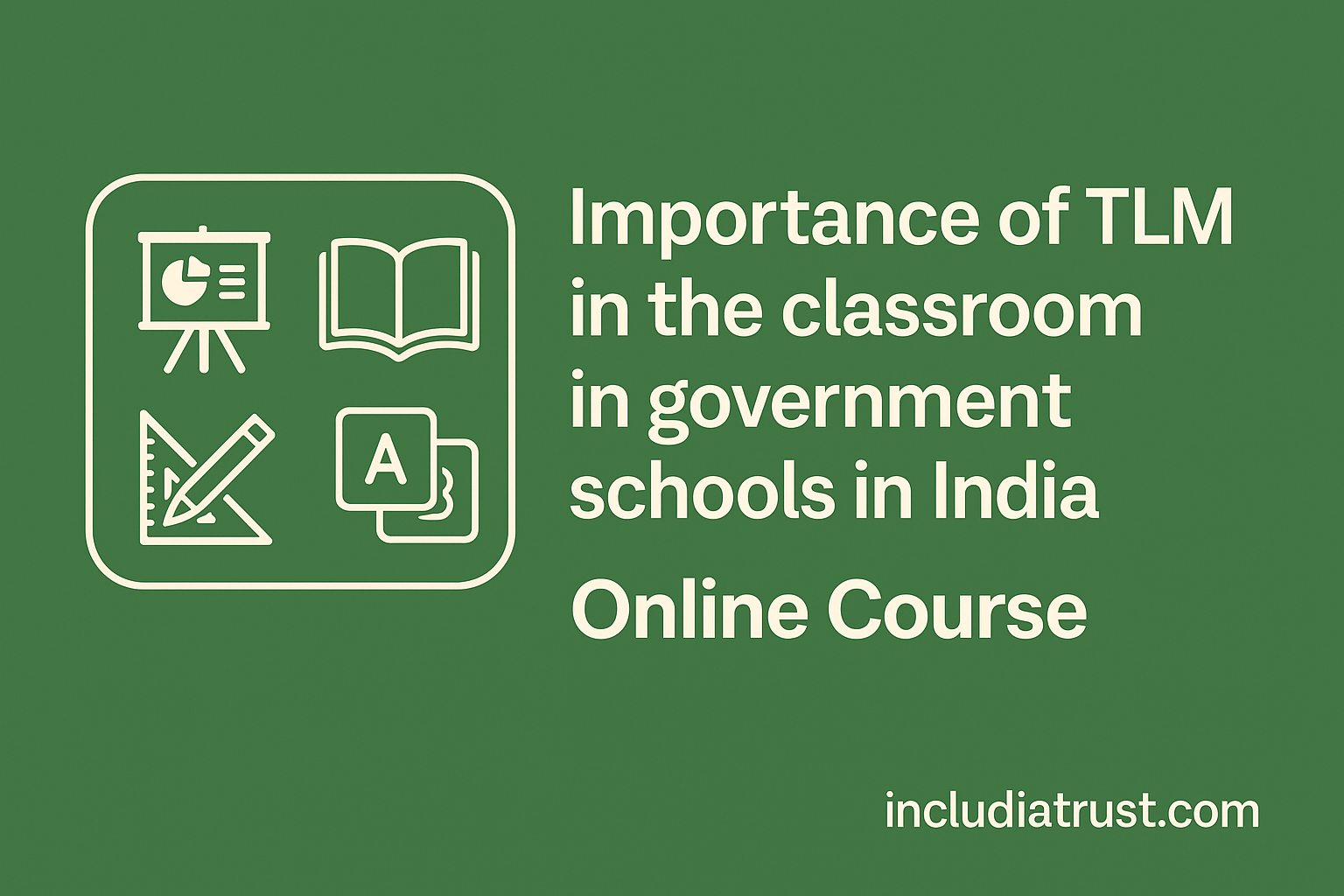Importance of Teaching-Learning Materials (TLM) in Government School Classrooms, India

About Course
This course examines how Teaching-Learning Materials (TLM) transform the classroom environment and student behavior in Indian government schools. Drawing on recent research and policy, it highlights TLM’s role in making learning active, multi-sensory, and inclusive. Learners will explore types of TLM (from low-cost manipulatives to digital media), understand pedagogical theories behind their use, review case studies (e.g. Tamil Nadu’s reforms), and learn how to overcome challenges in implementation. The course emphasizes a positive view: when well-designed and supported, TLM “provide valuable support and enhance the learning experience” for both teachers and students.
Learning Objectives: By the end of this course, learners will be able to:
-
Define Teaching-Learning Materials and list their various forms (physical, visual, audio, digital, etc.)
-
Explain the pedagogical value of TLM (active learning, multi-sensory engagement, motivation)
-
Analyze how TLM improve classroom atmosphere, student engagement and retention.
-
Identify challenges in implementing TLM in government schools and propose solutions (training, improvisation, policy support).
-
Design or select appropriate TLM for given lessons and assess their impact (assignments involve creating or critiquing TLM).
Course Content
Importance of Teaching-Learning Materials (TLM) in Government School Classrooms, India
-
Unit 1: Foundations of Teaching-Learning Materials (TLM)
-
Unit 1 — Assessment Bank (Foundations of TLM)
-
Unit 2 — Pedagogical Foundations & Benefits of TLM
-
Assessment for Unit 2: Design and Development of Effective TLM
Student Ratings & Reviews

